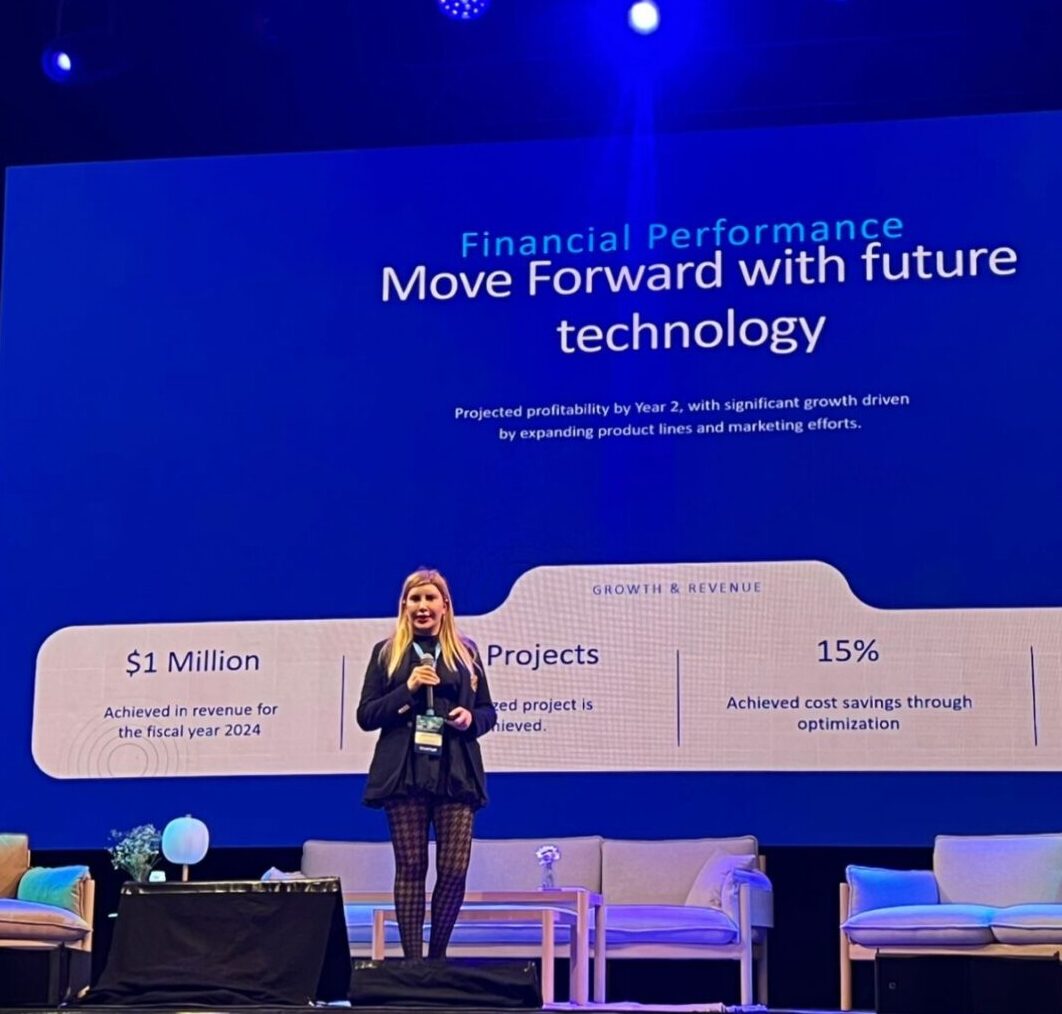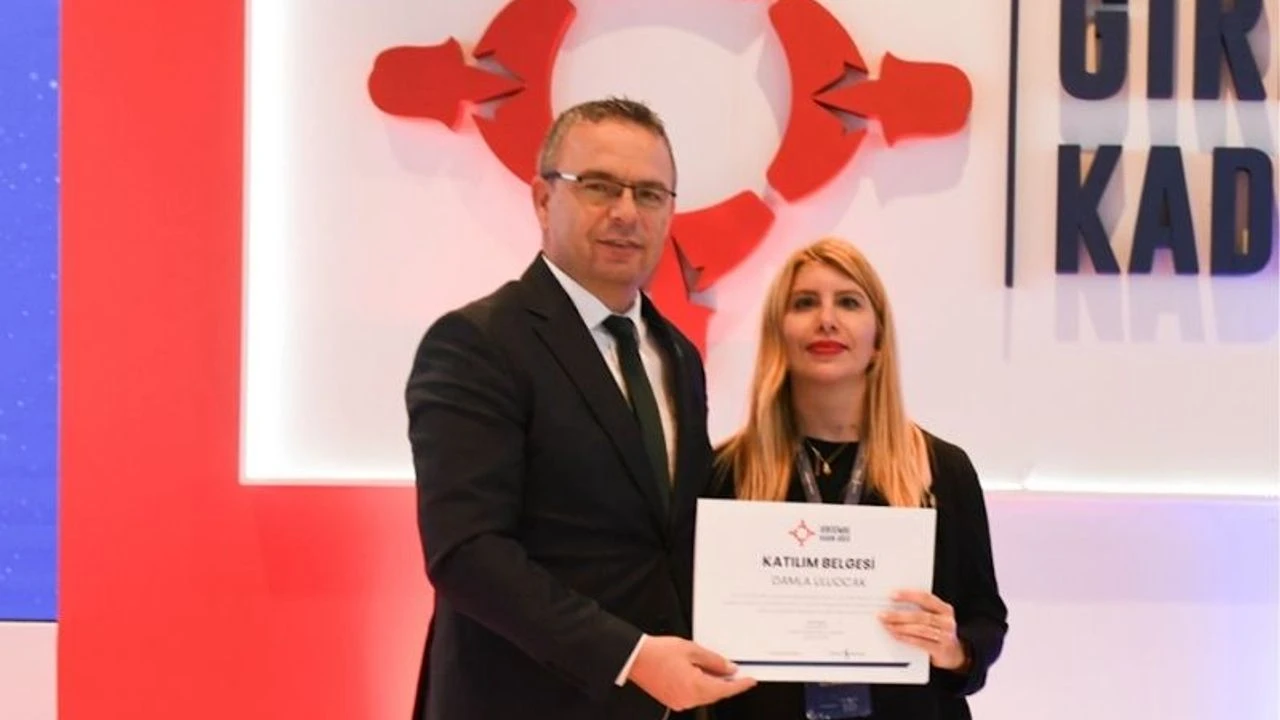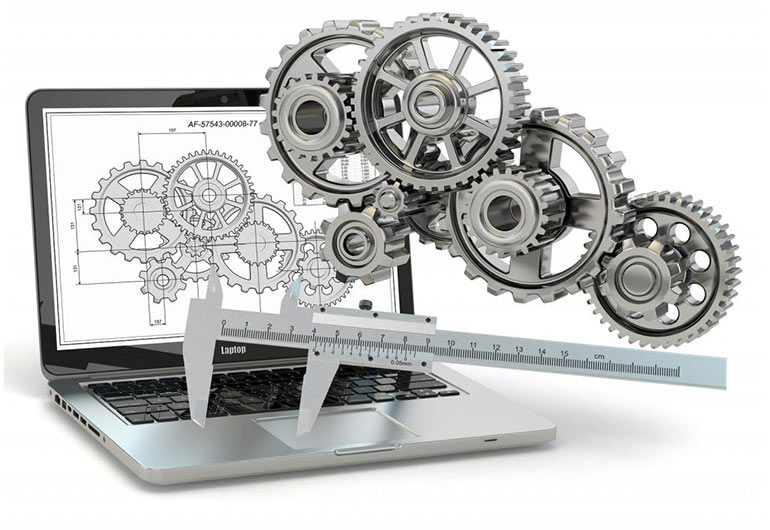WHAT IS MACHINE DESIGN?
Machine design is defined as the use of creativity, scientific principles and engineering techniques to create a machine or mechanism to meet customers’ demands. Machine design forms the basis of many products in our daily lives. Industrial machines, automobiles, white appliances, electronic devices and many more are products of this process. The key elements that are fundamental to the design process and enable the design to emerge successfully can be summarized as follows.
Creativity: Design requires the use of creative approaches to solve a problem. Because it is necessary to create an economical, useful and working structure. Designers use imagination to understand the customer’s needs and create solutions for these needs. At this stage, new and innovative ideas are developed.
Scientific Principles: Machine design is based on basic scientific principles. These principles include knowledge in fields such as physics, mathematics, materials science and mechanics. While working on a design, designers try to create a design by using these scientific principles.
Engineering Techniques: Machine design includes various techniques in engineering disciplines. These techniques include analytical calculations, modeling and simulation, prototyping, material selection, durability analysis and planning of production processes. Engineering techniques are used at every stage of the design process.
Customer Requirements and Economy: One of the most important issues in machine design is to fully meet customer needs. The design process aims to produce solutions that suit the customer’s needs in an economical way. This includes optimizing the effective performance and cost of the machines.
Continuous Improvement and Optimization: Machine design is based on the principles of continuous improvement and optimization. Designers evaluate feedback at every stage of design and continually improve their designs to increase the machines’ performance, durability and usability.
The machine design process usually requires a multidisciplinary approach and is carried out by experts with engineering training. This process can be applied in a wide range, from industrial machines to consumer products, and plays an important role in making machines safer, more efficient and more innovative.
The important steps of the machine design process can be listed as follows:
Material Selection and Mechanical Design: During the machine design process, the focus is on which materials will be used and the mechanical properties of these materials. According to the requirements of the design, material selection is made by considering factors such as appropriate durability, hardness, flexibility and other mechanical properties. Designers select suitable materials to determine the durability, load-carrying capacity, thermal behavior and other mechanical properties of the machines. These decisions are extremely important for the design to be successful and for the machines to show the desired performance.
Machine Elements and Calculations: It includes the examination and calculations of various parts (machine elements) and components used in machine design. Designers deal with issues such as sizing, calculating load-carrying capacity and durability analyses of these parts.
Machinery Production Technologies: Covers the production process of designed machines. In this process, the production methods of the machines are determined (such as casting, forging, machining, welding), the assembly process is planned and production costs are calculated. Choosing the right technologies during the design and production phase is critical for a successful production process.
Quality Control and Tests: This title covers controlling the quality and performance of the designed machines. At every stage of design, product compliance with quality standards is ensured, and verification processes with product tests are carried out. Quality control and testing are vital to the reliability and availability of machines.
Machinery Safety: Compliance of designed machines with occupational health and safety is discussed. During the design process, necessary precautions must be taken to ensure the safe use of machines. Issues such as risk assessment, design of protective equipment, compliance with safety standards and operator training are examined in detail.
MACHINE DESIGN STAGES
Machine design methods vary according to design purposes, intended use, areas of use and similar reasons. As Nilus Engineering, we offer tailor-made solutions to our customers, so to say. Due to the diversity of projects and sectors, we approach each of our projects as an R&D project.
The project design process starts from the customer’s field. In order for both the design process and subsequent processes to proceed with maximum efficiency, it is necessary to make a customer field visit and understand customer demands well. In fact, at this stage, the design takes shape in your mind and you create a draft for the preliminary design. The more detailed this outline is, the higher the success rate.
In order to offer your project, you need to create your project budget. The project budget will be clarified during the draft created during the field visit and the subsequent preliminary design process. During the preliminary design process, the equipment you will use and the scaffolding of your machine will begin to become clear. It is worth noting that, in addition to the equipment and manufacturing costs, there are many different items within the scope of the project budget, such as the number of people who will work for the project, the project duration, the amount of equipment required for project installation, and so on.
At the end of the preliminary design process, you have created the necessary budget and workforce for your project. You can now submit an offer with the data you have. The project manufacturing process begins with project approval. In this process, designs are made ready for manufacturing, necessary equipment is purchased, and mechanical assembly and machinery are made ready for commissioning. We can briefly say that the design process is like this.
Why is there a need for machine design?
Meeting Needs: Machines are designed to meet specific needs of people or industry. Machines are developed for various purposes such as production, transportation and processing.
Increased Productivity: Well-designed machines enable operations to be carried out faster and more efficiently. This reduces the costs of businesses and increases efficiency.
Safety: The safety of machines is important to protect both operators and the environment. Well-designed machines must comply with safety standards to prevent occupational accidents.
Quality Control: Machines are used to improve the quality of products and ensure stability. Automation and control systems enable products to be produced in a more stable manner.
Competitive Advantage: Well-designed machines can help a business gain a competitive advantage. Factors such as faster production, lower costs or higher quality can differentiate a business from its competitors.
Customized Solutions: The needs of every industry or business are different. Customized machines can be designed to meet specific requirements, providing more effective and efficient solutions.
Technological Progress: Machine design constantly evolves with the advancement of technology. Innovations such as better materials, smarter control systems and more efficient energy use enable machines to be constantly improved.
For these reasons, machine design is important for industrial and commercial activities and continues to be constantly improved.
As Nilus Engineering, we offer various services in the fields of industrial robot systems and robot automation systems. This forms an important part of our design process. By approaching our projects with a customer focus, we provide full support in your projects by designing, installing and programming SCARA robots, delta robots and similar robotic systems for your needs together with our expert team. We offer you special solutions for your robot automation systems or robot systems-related projects.
Robotics technology is vital to meet automation needs in industry. Scara robots are ideal for assembly and packaging processes that require high speed and precise movements. Delta robots offer excellent solutions for fast pick-and-place applications. The design and integration of these robot systems constitutes an important stage for the successful completion of the project.
The use of robotic technology continues in the final stages of our design process. With project approval, manufacturing and integration of robot systems and robot automation systems begins. In this process, we continue to offer robotic solutions that meet the needs of our customers by performing the critical steps in the transition from design to production phase. We are here to help you make the most of these advantages brought by technology for your business. You can contact us for all kinds of robotics and automation projects.
USAGE AREAS OF MACHINE DESIGN
Machine design has a usage area that extends from industrial processes to various areas of daily life. This discipline includes the design, analysis and production of machines and mechanical systems. Machine design plays an important role in industrial processes through the design and optimization of advanced technologies such as industrial robot systems. Robot automation systems are specially designed systems to increase work efficiency in production facilities and support human workforce. Robot programming is a critical step that determines the functionality of these systems; This process plays an important role for robots to successfully perform complex tasks. Delta robots are one of the preferred robot types in applications such as assembly and packaging with their fast and precise movement capabilities. Scara robots are robot systems that are widely used in industrial assembly and processing processes and provide high precision. Developments in all these areas benefit from a combination of engineering and design disciplines to make machines more functional, efficient and safe.
These disciplines apply complex mathematical and physical principles to improve the performance of industrial robotic systems and robot automation systems. In the design of robot automation systems, special algorithms and robot programming techniques are used to increase the work efficiency of the machines’ production processes and to support the workforce. The development of specialized robotic systems, such as Delta robots and Scara robots, utilizes fields such as materials science, computer-aided design and mechanical engineering to enable machines to operate at high performance. This approach utilizes the combination of different disciplines to ensure machines operate effectively and efficiently in today’s dynamic production environments.
Some uses of machine design:
Manufacturing Industry: Covers the design of machines used in manufacturing and production processes. These machines are used in many areas such as automation, processing, assembly, packaging and material handling.
Automotive: Mechanical engineering plays a major role in the design and production of vehicles such as cars, trucks and buses. The design of many components such as engine design, transmission systems, suspension and steering systems falls into this field.
Aerospace Industry: The design and production of air and space vehicles such as airplanes, helicopters and rockets is an important part of mechanical engineering. Elements such as aerodynamics, material selection and engine design are important in this field.
Energy Sector: The design and optimization of machines in facilities used for energy production and distribution is one of the basic elements of the energy sector. This scope includes generators, turbines, pumps and other energy equipment.
Medical Devices: The design and production of medical devices covers a wide range from hospital equipment to surgical instruments. These devices are used in the cure, diagnosis and rehabilitation processes of patients.
Food Industry: Food processing and packaging machines are designed by mechanical engineering. These machines play an important role in food production processes from farm to table.
Game and Entertainment Sector: The design of interactive devices and machines used in areas such as amusement parks, video games and simulators is also based on mechanical engineering.
Environmental Technologies: The design of machines used for environmental technologies such as waste management, recycling, water purification is aimed at developing environmentally friendly and sustainable solutions.
Machine design is used in many different areas besides the areas mentioned above. In these areas, new and advanced designs are constantly worked on to increase the efficiency of machines, reduce costs and ensure safety.
We also encounter machine design in daily life. The design of products such as home appliances, electric vehicles, game consoles and healthcare devices are area of expertise of mechanical engineers. Each of these designs is carefully designed to meet user needs, increase energy efficiency and minimize environmental impacts.
Machine design is constantly evolving with the rapid development of technology, offering more complex, comprehensive and innovative solutions in different sectors. By bringing together various disciplines such as mathematics, physics, material science and computer-aided design, designers continue their work by ensuring that machines are more reliable, efficient and sustainable, considering factors such as user needs and experiences.






